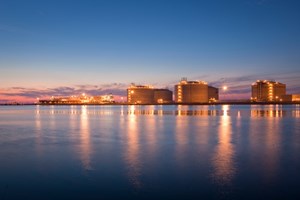LNG, pipeline export projects to drive U.S. natural gas trade growth, EIA reports
(WO) – In the Short-Term Energy Outlook (STEO), the U.S. Energy Information Administration (EIA) forecasted that U.S. liquefied natural gas (LNG) exports will keep leading the U.S. natural gas sector as three LNG export projects soon begin operations and reach full production by the end of 2025.
The EIA also forecasted increased natural gas pipeline exports, mostly to Mexico. In the STEO forecast, net exports of U.S. natural gas will grow 6% to 13.6 Bcfd in 2024 compared with 2023. In 2025, net exports will increase another 20% to 16.4 Bcf/d.
The EIA also predicted that U.S. LNG exports will increase 2% in 2024 to an average of 12.2 Bcfd. In 2025, the EIA estimates that LNG exports will grow by an additional 18% to 2.1 Bcfd.
Additionally, the group expects U.S. natural gas pipeline exports to grow by 3% to 0.3 Bcfd in 2024 and by 4% in 2025. The agency expects pipeline imports to decline by 0.4 Bcfd in 2024 and then increase slightly in 2025 by 0.1 Bcfd.
In April and May 2024, the agency expects LNG exports to decline while two of the three trains at the Freeport LNG export facility undergo maintenance. Later in 2024, the administration expects that Plaquemines LNG Phase I and Corpus Christi Stage 3 to begin LNG production and load first cargoes by the end of the year.
In 2025, the developers of Golden Pass LNG plan to place the first two trains of this new three-train LNG export facility in service.
The EIA predicts an increase in U.S. natural gas pipeline exports to Mexico as several regional pipelines —Tula-Villa de Reyes, Tuxpan-Tula, and Cuxtal Phase II connecting to the Energía Mayakan pipeline on the Yucatán Peninsula— become fully operational in 2024 or 2025.
The pipelines started operating in 2022–23 but have not been operating at full capacity. Additionally, flows via the Sur de Texas-Tuxpan underwater pipeline are expected to increase slightly in 2024 when it begins sending natural gas from the U.S. to Fast LNG Altamira, Mexico’s first LNG export project.
U.S. natural gas pipeline imports from Canada remained relatively unchanged over the last 2022–23, averaging 8.1 Bcfd. As such, the agency expects Canadian pipeline imports to remain an important supply source, especially for the U.S. Midwest region
U.S. LNG imports declined slightly in 2023, mainly because of record-warm winter weather. The EIA expects LNG imports to average about 0.1 Bcfd in 2024 and 2025, and will continue to serve as a marginal supply source during periods of high demand, particularly in the winter months.



